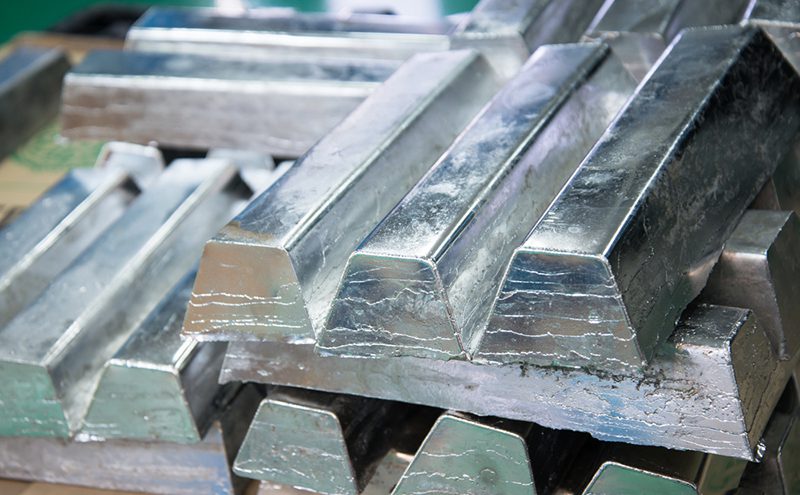
Dr Tim Johnson, technical director at resource recovery firm Tetronics International shares a few thoughts on lead: Its properties, usefulness, and the possibilities for recycling it
Why is everyone talking about lead?
Not long ago, like so many historic buildings in the UK, a local parish church near to where I live had the lead stolen from its roof. Sadly, this is not so unusual and all the more distressing in this case, both because it holds special memories as the church where my wife and I were married, and also because the lead was stolen during heavy rain, leading to further damage inside this ancient building, parts of which are nearly a thousand years old.
At times like this, someone always asks why something else, something less valuable than lead, isn’t used for roofing so there would be less incentive for criminals to cause this destruction. The fact remains, however, that despite millennia since it was first used in this application, lead remains pre-eminently suited to weather proofing such buildings.
Britain has a long history of lead mining and smelting and her substantial lead reserves were a key economic reason why the Roman armies invaded in AD 43. Several large lead ingots have been found in the Mendip Hills dating back to the years immediately after the invasion, attesting to the keenness of the Romans to kick-start serious lead extraction in this country. And no wonder, because the quality of the ores available at the time must have been astonishingly high – as late as the 19th Century the spoils and tailings from older workings had lead contents up to 57wt% . This makes these waste deposits the kind of ore bodies that would have delegates at a junior mining conference fighting each other in the streets for the mining rights!
Why lead is so vital, yet so toxic
Lead is a truly remarkable metal. It has a low melting point and can be made easily into sheets that are very malleable, it is amenable to cutting and joining, resistant to sunlight, tolerant of wide changes in temperature and impervious to water, hence its historic use in piping, guttering and roofing. It also has other very useful properties that have made it an ideal choice in the past for solders for electrical components and to this day as electrodes in car batteries, plus a wide range of other uses, such as paints and ceramic glazes.
However, lead is also highly toxic to plants, animals and humans and is responsible for many of the world’s most polluted sites, as a result of both primary lead production from mining and also from recycling of car batteries and other lead wastes. It has been phased out to varying degrees on environmental grounds in many applications, such as water piping, vehicle fuel and solders. Indeed, the introduction of unleaded fuel several decades ago has even been credited with long term reductions in violent crime. However, it remains just too useful a metal to dispense with and it is also found widely in the extraction of other metals, such as copper, zinc, silver and iron. As a result, lead-containing wastes will continue to be generated around the world for the foreseeable future, thereby further adding to stocks of legacy wastes that are already causing concerns.
Producing and recycling lead safely
With all this in mind, it is very heartening to see mining companies of all flavours taking their environmental responsibilities seriously and to see tighter regulations being introduced and enforced by the authorities in many countries. This is partly a reflection of the far greater public awareness of the toxicity of lead, which has put it alongside an elite list of other hazardous materials in the public consciousness that includes radioactive waste, asbestos, mercury and hexavalent chromium. It is also partly a result of the intrinsic value of the lead and other metals typically associated with it, such as zinc, copper, tin and antimony, which provides an additional financial incentive to recover as much of the hazardous metals as possible.
As part of the efforts by the wider metallurgical community to address these issues, Tetronics has been using its plasma technology to treat lead-containing wastes for many years. What this work has shown is that plasma smelting is highly effective at driving the key metals that tend to be valuable, hazardous or often both, out of the starting material and into an alloy phase or a dust in the exhaust gas abatement system. This ensures that the resulting slag phase is inert and non-leachable and can therefore be used as a secondary aggregate or at the very least disposable in non-hazardous landfill, depending on the local regulations. The alloy and dust outputs can then be recycled to existing smelting or refining operations for extraction of the final metals.
Many pyrometallurgical processes involve the generation of a deep bed of partially reacted feed material (the ‘charge’) on the surface of the molten products. This is especially true of shaft or blast furnaces, but also in submerged arc melting. The depth of the bed means the upper surface of the charge is relatively cold, giving so-called ‘black top’ operation; this encourages more volatile materials from the bath to condense in the colder portions of the charge. However, plasma smelting uses an open, exposed arc and a thinner layer of feed in so-called ‘red top’ operation. The pressure of the gas in the arc tends to create an area of exposed molten slag around the arc and this allows more volatile metals, such as lead, zinc, cadmium and arsenic, to evaporate from the slag surface directly into the furnace gas space. The high localised temperatures around the arc also increase the levels of evaporation of the volatile species and once released from the slag, they are drawn away from the charge and into the exhaust gases, where they are oxidised and collected in the filter as dust.
The future is plasma
As a result, plasma smelting is extremely effective in decreasing these toxic and volatile metals in the slag to very low concentrations. Empirical observations indicate >99.9% of the input lead and zinc are typically recovered to the alloy and off-gas dust phases. Not only does this make it far easier to ensure the slag is inert and safe for use in other applications as a product (and therefore not a waste), but it also maximises the value that can be recovered from the waste input materials.
So, with lead being one of those metals that is simultaneously useful, valuable and toxic, it is likely to remain in demand for centuries to come and the conundrum of how to protect lead roofing on historic buildings will persist. Meanwhile, we believe Tetronics plasma arc technology has much to offer in the parallel battle of producing and recycling lead safely.







